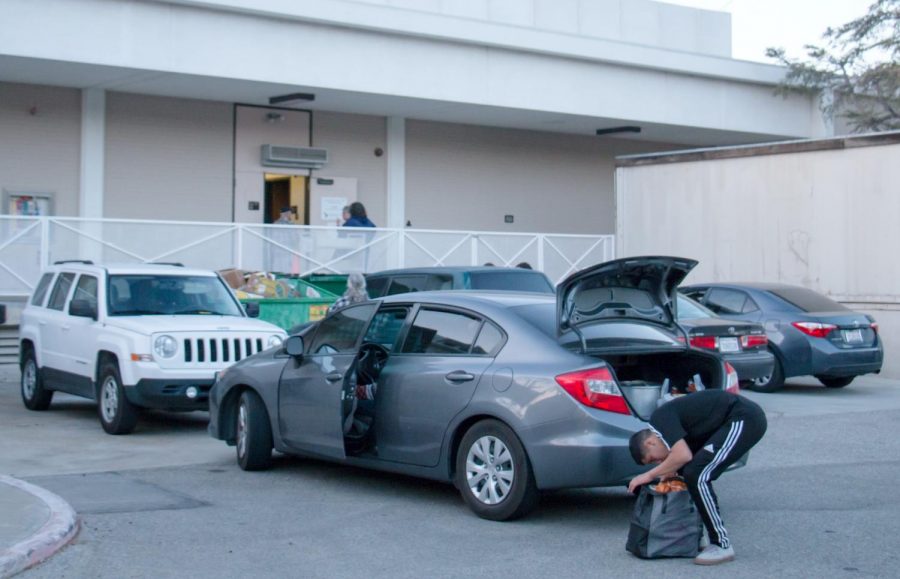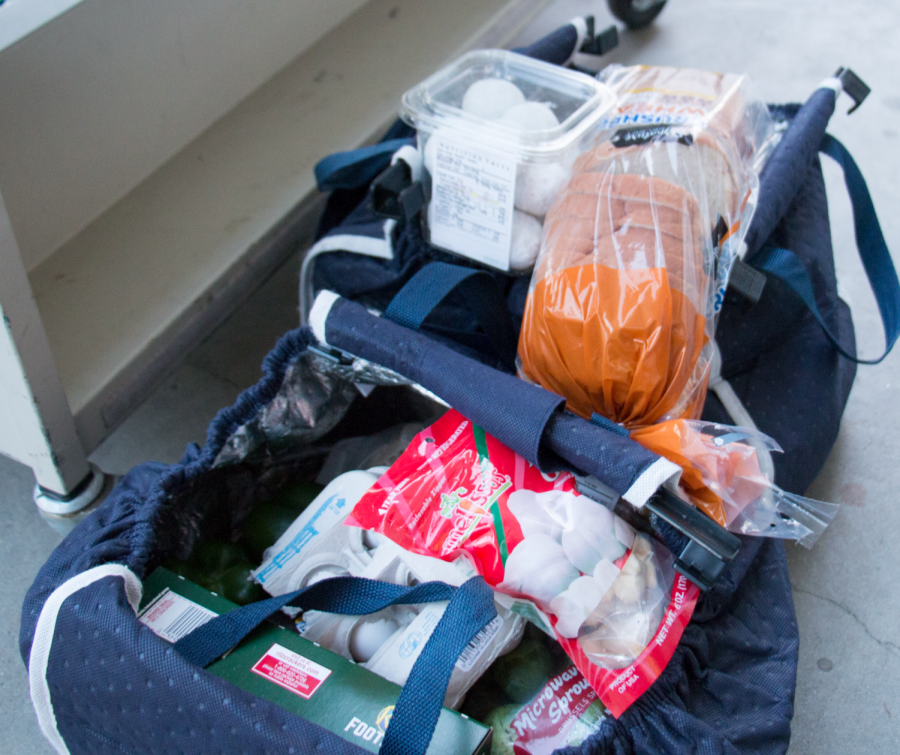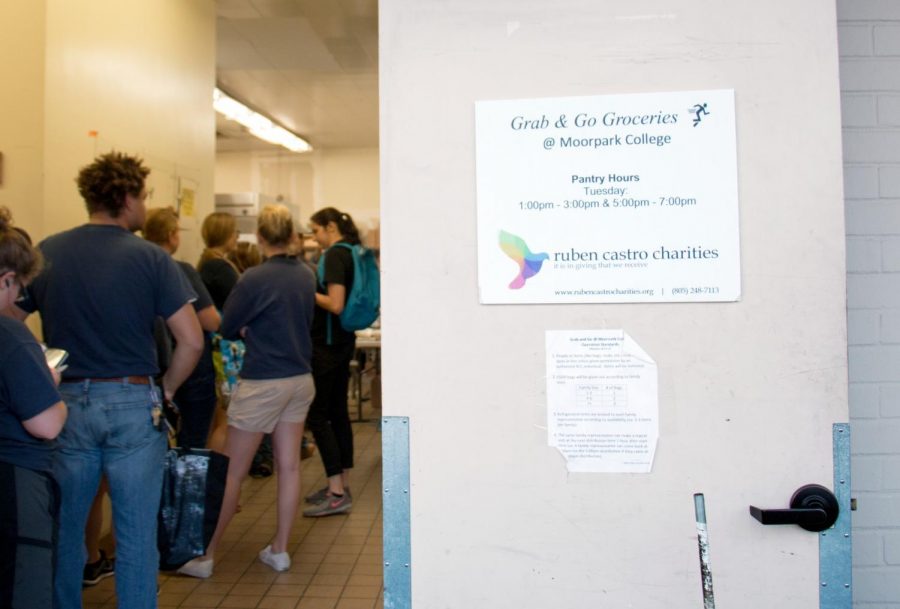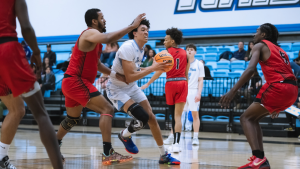More free food will be available to students this semester
Students line up at the Grab and Go food pantry entrance. Its visited by students in time intensive programs such as America’s Teaching Zoo, the nursing program and athletics program, according to professor Ruth Bennington. Students in such programs or that take excess units are often incapable of holding down an off campus job. Photo credit: Martin Bilbao
February 11, 2018
Students who struggle to buy enough food can find more free groceries this semester.
The district board approved the allocation of $24,242 to Moorpark College to address food insecurities on campus. Dean Howard Davis is planning the distribution of these funds across campus programs.
“Food insecurity is such a critical issue,” said Davis. “You can’t expect a student to pay attention in class when their stomach is grumbling. It’s a huge part of student success.”
This funding comes from a $2.5 million state initiative to support students who have difficulties affording healthy food. Moorpark College plans to use this funding to purchase more food for programs on campus including the already established volunteer food pantry. For students who have a hard time making ends meet or are incapable of holding a job while studying, programs such as the food pantry offer easy relief.
The campus intends to create sign up stations for CalFresh, a state program that helps low-income people afford food.
“The food that we buy with that money would only be available to students and we would have a person there to assist those students in completing CalFresh applications,” said Davis.
Current research suggests that a significant number of college students suffer from food insecurity, according to professor Ruth Bennington who is involved in the charity that runs the food pantry. Ruben Castro Charities administers the Grab and Go food pantry which is open to students and locals alike.
About 100 families visit the food pantry every week, Bennington said. Students in time intensive programs often visit the pantry. This includes programs such as America’s Teaching Zoo, nursing program and athletics programs. Students in intensive programs or that take excess units are often incapable of holding down an off campus job. For them, the food pantry may be indispensable.

Students in need of food can visit the Grab and Go pantry behind the campus center every Tuesday from 1 to 3 p.m. or 5 to 7 p.m. New visitors are asked to fill out a form for purely statistical uses. The United States Department of Agriculture requires the form in order to receive certain foods provided by the department. The information on the form is confidential.
“If you tell us you need food, we give you food,” said Bennington. “We don’t interrogate people.”
The types of food offered at the pantry include USDA food cans, fruit, vegetables, soups, meat, rice and pasta. Volunteers also scout local grocery stores to donate other foods, such as bread. In addition, the charity reaches out to local farmers.
“Local farmers are very good to us, so we get fresh produce,” said Bennington. “We often have milk and eggs.”

According to Health Center coordinator Sharon Manakas, the pantry should be an easy choice for students in need.
“If that means the difference between putting gas in your tank to get to school or getting food, use the pantry,” said Manakas. “Sometimes we need to swallow our pride and be a smart consumer. It just helps to make ends meet.”








Mary A Altshuller • Feb 13, 2018 at 3 -08:00.02.
Good stuff, Martin!